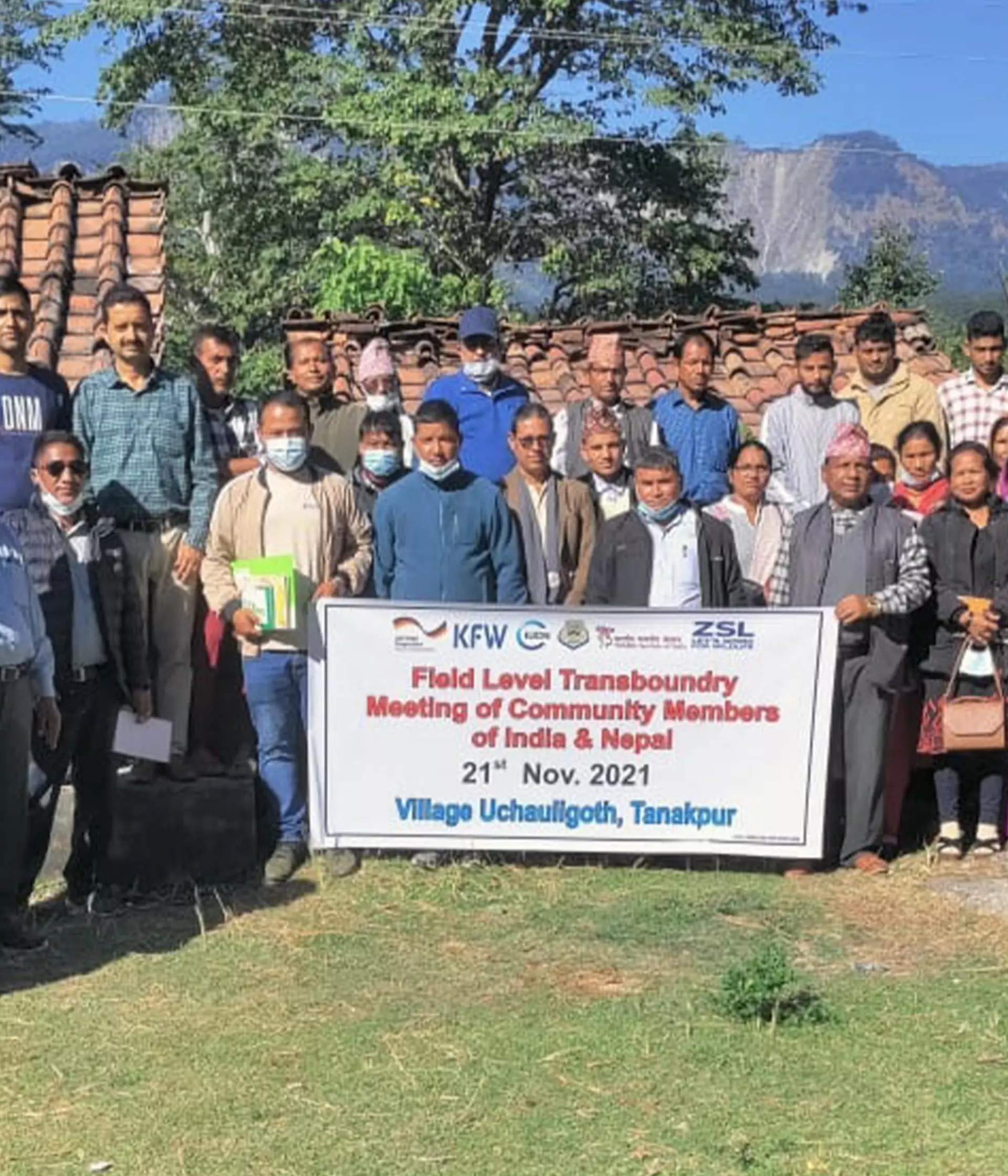
ZSL
Zoological Society of London
Together for tigers
ZSL Deputy Country Manager in Nepal, Bhagawan Raj Dahal explains how teamwork and joined up thinking has helped conservation teams, governments and communities across the Nepali and Indian border work together to help protect threatened species, and support local people living alongside them.
Transboundary cooperation is vital for wildlife conservation, especially when the habitat of wildlife transcends country borders. In the case of Nepal and India, large, endangered mammals including Bengal tigers, one-horned rhinos and Asian elephants share and constantly cross borders. However, the habitat of these animals in both countries are plagued with issues of loss and degradation, poaching and human wildlife conflict. The shared country border also makes it an easy trade route for poachers. To strengthen the transboundary cooperation, we work with the governments and a range of conservation partners in both the countries.

What is transboundary cooperation and what have we been doing?
ZSL is part of the ITHCP tiger recovery project. As part of this work, transboundary cooperation is as an important tool to support positive human wildlife coexistence and the improvement of livelihoods and well-being of people. For conservation to really work, local people need to be part of the decision making and benefit from protecting the large wildlife that they live alongside.
Last year, ZSL conducted the first field- level transboundary meeting with communities living in and around Banke National Park, Bardia National Park and Shuklaphanta National Park, at Uchoula Gooth village, Nandhaur WLS, India on 21st November 2021. Community members - both men and women -participated, with 46 people from India and Nepal sharing best practice and experiences from a recent visit to Govind Ballabh Pant University of Agriculture and Technology, as part of the project.
During the meeting, the Nepali communities demonstrated how they mitigate human wildlife conflict with Buffer Zone Management Committees (BZMC) and support local livelihood activities such as community banking. The community members from India shared their human wildlife conflict mitigation techniques which include, tentacle fences, early warning systems and diversified agriculture activities.

Sharing a common goal
There are many reasons why transboundary cooperation can help improve conservation initiatives. Although separated by an administrative boundary, both nations share a common goal in wildlife conservation.
Nepal and India have many ecological and social similarities. For example, people living in the fringe areas of forest depend heavily on the natural resources found there and face high and increasing human wildlife conflict. Communities in both regions are also often involved in natural resource management and wildlife conservation.
Secondly, owing to the shared border being a fertile ground for poaching and trading, animals benefit from transboundary protection as they cross borders. Sharing borders and similar landscape means facing similar conservation issues, so the swapping and sharing of best practice and knowledge can be very beneficial.
During the first phase of work in Nepal, the ZSL team found that predator proof corrals, community banking led by women, and early warning systems proved to be the most effective ways of reducing human wildlife conflict and engaging local people in conservation activities. In India, tentacle fences and collaboration with universities were most successful. Although high level transboundary meetings between conservation officials have occurred before, this cooperation must also trickle down to a grassroot level and bring together affected communities.

What’s next?
As part of the second phase of the ITHCP work, ZSL’s teams will focus on facilitating translation of best practices in each country. This will include human wildlife conflict mitigation and support for marginalized communities and their livelihoods. We aim to establish community networks that transcends borders, enabling information flow and harmonizing park-ranger relationships, as well as increasing the confidence of the communities in tackling the issues of wildlife conservation.
Transboundary events and cooperation with universities will also bring training and learning opportunities to rural and marginalized communities across both countries. These communities usually have limited to no access to events such as these, owing to geographical and financial challenges.
Endangered wildlife like tigers, rhinos and elephants play a valuable role in the natural spaces of India and Nepal. To protect them and support existing human wildlife co-existence plans, joined up thinking across borders and communities in essential.
The Integrated Tiger Habitat Conservation Programme (ITHCP) is an initiative implemented by the International Union for Conservation of Nature (IUCN) and funded by German Cooperation via KfW Development Bank, which contributes to the global effort to double tiger numbers in the wild by 2022 by supporting landscape level conservation work benefiting species, communities and habitats. Coordinated actions enhancing conservation skills, developing new livelihoods and improving governance and infrastructure are delivering results in terms of better protected tigers across these landscapes.
